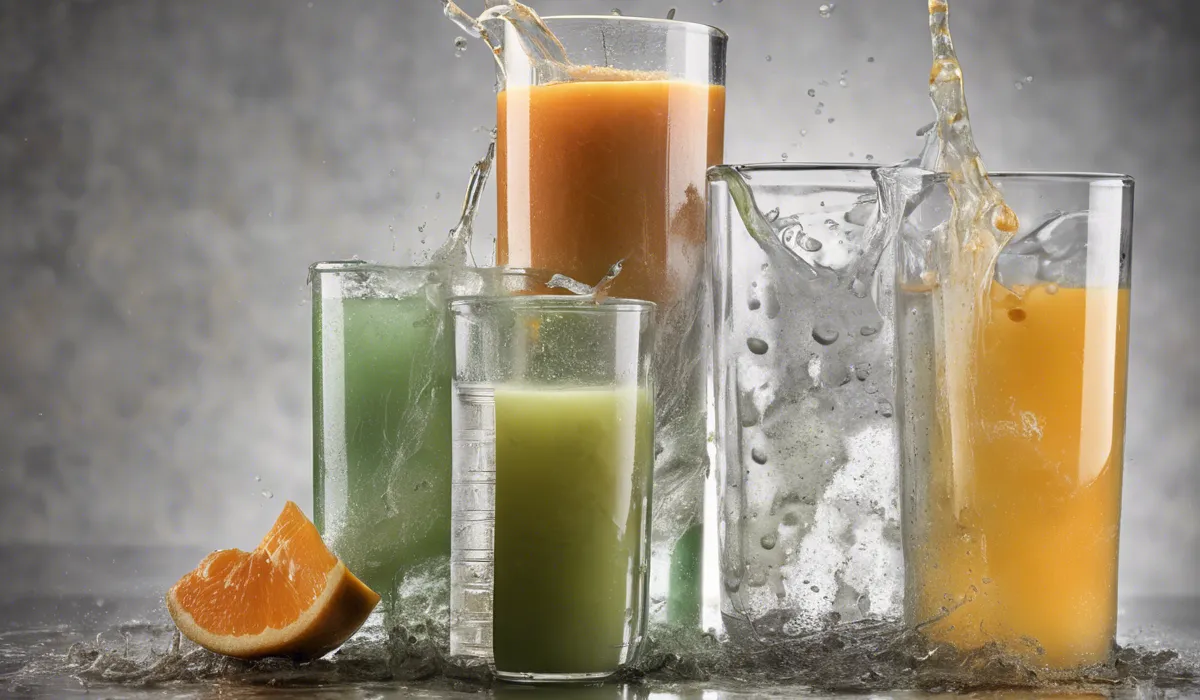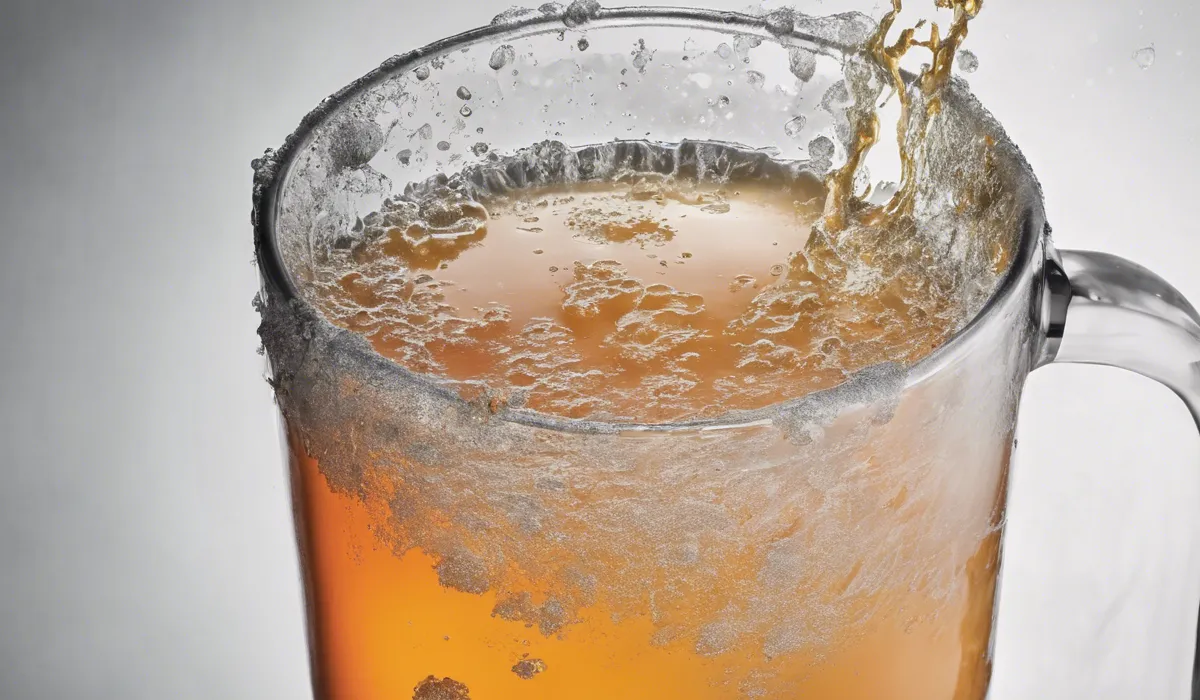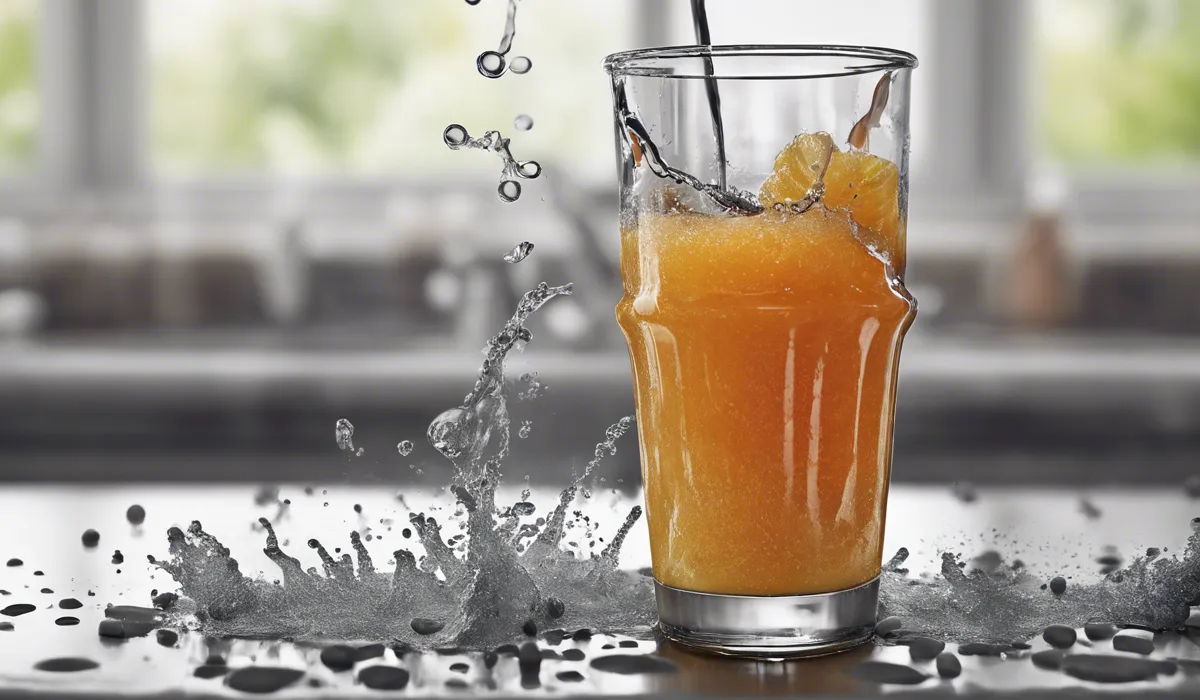Mold in juice is dangerous as it can produce harmful mycotoxins. Ingesting these can cause allergic reactions and respiratory problems. It’s advised to discard moldy juice immediately to prevent health risks.
Understanding Mold and Its Potential Risks

What is Mold?
Mold is a type of fungus that can grow almost anywhere there’s moisture and organic material.
There are thousands of mold species, but the ones often found in food and beverages include Penicillium, Aspergillus, and Fusarium.
These molds can appear as fuzzy growths or discolorations on the surface of liquids and foods.
Mold reproduces through tiny spores that travel through the air, which is why it can spread so easily.
Causes of Mold in Juice
Juice provides an ideal environment for mold when it’s exposed to air and stored at room temperature.
Factors like damaged packaging, contamination during the bottling process, or improper storage can all lead to mold growth.
Once mold spores settle in the juice, they can start to grow if the conditions are right, such as when juice is left out of the refrigerator for too long.
Health Hazards from Mold
Exposure to mold can lead to health problems, especially for those with allergies or weakened immune systems.
Ingesting moldy juice can cause nausea, vomiting, and diarrhea. Long-term exposure to certain molds might even contribute to more severe respiratory conditions.
Mycotoxins: A Hidden Danger
Some molds produce toxic compounds called mycotoxins, which are very harmful if consumed.
Even if the mold is no longer present, these toxins can remain in the juice and pose serious health risks, such as immune suppression and liver damage.
It is crucial to understand that the presence of mycotoxins is not always detectable by sight or smell, making them particularly dangerous.
Identifying Mold in Juice

Visual Signs of Mold
One of the first indicators of mold in juice is a change in appearance. Mold can manifest as fuzzy spots on the surface or cause the juice to become cloudy.
You might also notice strings or clumps floating in the juice, which are signs that mold has started to grow.
Olfactory Evidence of Mold
If juice has an unusual or sour smell, it may be a warning that mold is present. This can happen even before any visual signs appear.
Trust your nose—if something smells off, it’s better to be safe and throw the juice out.
Understanding Expiration and Storage
Expiration dates and proper storage are key to preventing mold growth. Juices should be stored in the refrigerator and tightly sealed to reduce the exposure to air.
Always check the “best by” dates and adhere to them to ensure you’re consuming the juice while it’s still safe.
When to Discard Juice?
Not all mold growth is visible to the naked eye. Sometimes, toxins can be present without any visible mold.
If you suspect that your juice has been stored improperly or is past its expiration date, it’s best to discard it to avoid the risk of illness.
Prevention and Safety Measures

Stopping Mold Before It Starts
Preventing mold in juice starts with refrigeration and proper sealing. Cold temperatures slow down mold growth, and an airtight seal prevents spores from getting into the juice.
Always refrigerate juice promptly and keep it sealed when not in use.
Hygienic Juice Handling
When you’re preparing juice, whether at home or commercially, cleanliness is crucial. Make sure all equipment is clean and that you wash your hands before handling juice to prevent the introduction of mold spores.
Choosing the Right Juice
Purchasing pasteurized juices can reduce the risk of mold since the pasteurization process kills mold spores.
Look for juices that have been treated and properly sealed. Remember to check the expiration dates, as even pasteurized juices can spoil.
What to Do After Exposure?
If you or someone you know has consumed juice that might be contaminated with mold, it’s important to seek medical advice.
Keep an eye out for symptoms like stomach upset, allergic reactions, or respiratory issues. If symptoms occur, contact a healthcare professional immediately.
FAQs About Mold in Juice
Is mold in juice harmful if ingested?
Yes, mold in juice can be harmful if ingested because it may produce mycotoxins, which can cause allergic reactions and respiratory problems.
What should I do if I find mold in my juice?
If you find mold in your juice, you should discard the juice immediately to prevent any health risks.
Can mold in juice cause allergic reactions?
Yes, ingesting mold in juice can cause allergic reactions in some individuals.
Is it safe to just remove the mold from juice and drink the rest?
No, it is not safe to remove the mold and drink the rest of the juice as mold can contaminate beyond what is visible, including producing toxins.
Can breathing in mold from juice cause respiratory problems?
Yes, breathing in mold from juice can cause respiratory problems, especially for those with mold sensitivities or compromised immune systems.
Final Thoughts
Mold in juice poses a significant health hazard due to the potential production of mycotoxins. These toxins can lead to allergic reactions and respiratory issues when consumed.
It is crucial for safety to dispose of any juice that shows signs of mold to mitigate health risks effectively.
Useful Resources
- http://www.fsis.usda.gov/food-safety/safe-food-handling-and-preparation/food-safety-basics/molds-food-are-they-dangerous
- https://www.cpsc.gov/Recalls/2024/Pure-Brands-of-California-Recalls-PureFog-Juice-Liquid-Due-to-Risk-of-Mold-Exposure-Sold-Exclusively-on-Amazon-com
- https://www.fsis.usda.gov/sites/default/files/media_file/2021-02/Molds_on_Food.pdf
